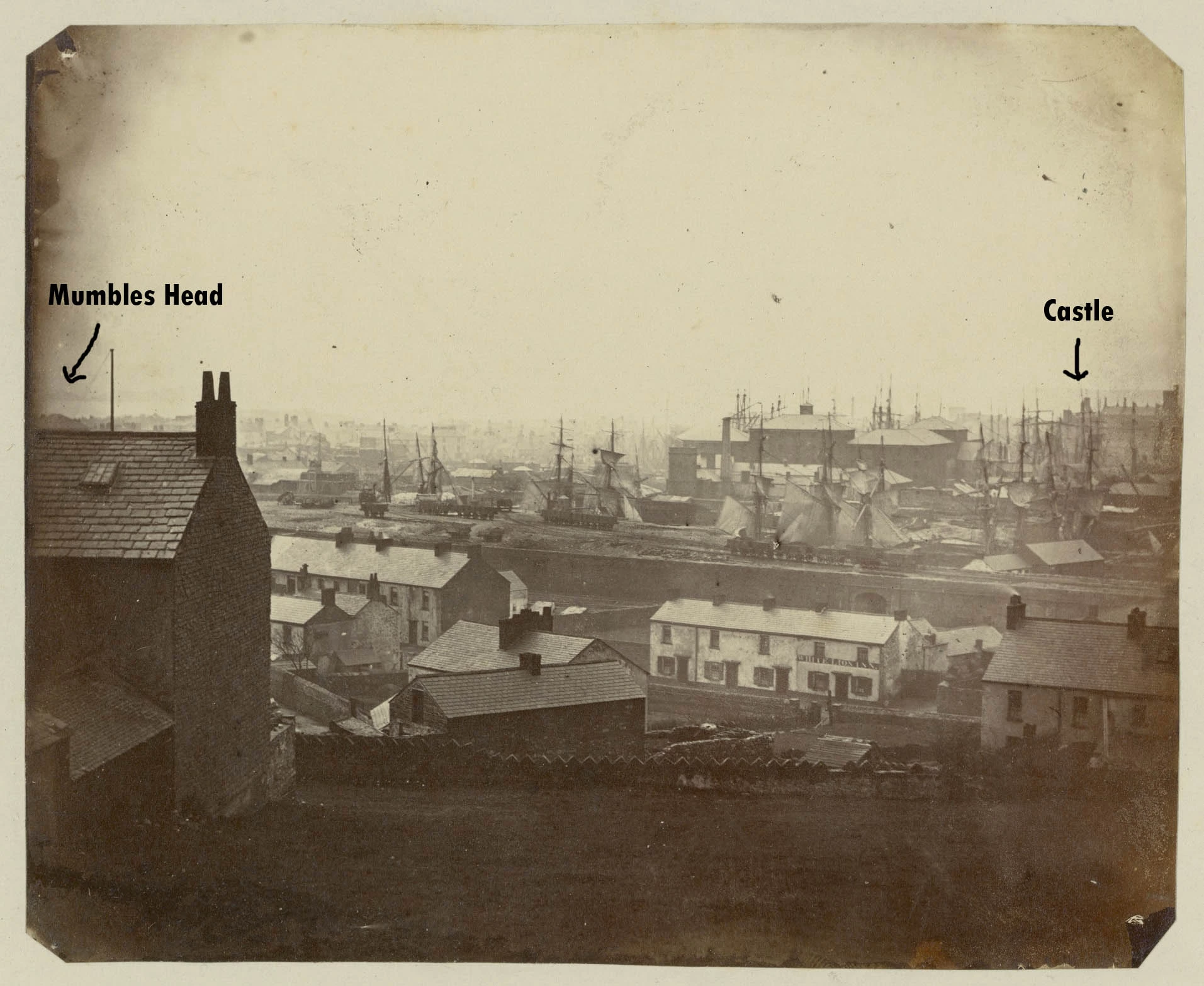View of Swansea in 1858
, 20 Gorffennaf 2015
Recently working through the John Dillwyn Llewelyn collection, I was reminded of this amazing photograph of Swansea taken in 1858. The image was taken on the 15 March 1858 at 1 o'clock with an exposure of 15 minutes. It was taken by Welsh photographer John Dillwyn Llewelyn using a ground breaking process invented by him in 1856 called the Oxymel process. This was a development of the wet collodion process and used a solution of acetic acid, water & honey to preserve images. This meant that glass negatives could be prepared in advance and exposed in the camera as required, and produced a dry plate that could be kept for days. This new process meant landscape photographers no longer needed to carry with them portable laboratories and darkroom tents.
The photograph shows Swansea taken from St. Thomas on the 15 March 1858. To the far left, above the roofline, Mumbles Head can just about be made out. In the background (slightly to the right) can be seen the North Dock with buildings around it, and sailing ships in the dock. In front of that is the railway embankment alongside the New Cut of the river Tawe. In the foreground can be seen a number of houses, including the 'White Lion Inn', and to the far right it is just about possible to make out the remains of Swansea Castle.
I thought that it would be interesting to try and identify the viewpoint from where this photograph was taken and to see how the view might have changed since 1858. I therefore contacted my colleague Andrew Deathe at the National Waterfront Museum, Swansea to see if his knowledge of the area would allow him to identify the viewpoint.
Living locally Andrew was able to take this modern view in May 2015. He took the photograph by standing on the road which is in the foreground of the 1858 image, which is called Bay View, in St. Thomas. The house in the original image is just behind his viewpoint. John Dillwyn Llewelyn seemed to be standing half way between Bay View and Windmill Terrace (which wasn't built for another 20 years).
The skyline of Swansea has seen many changes over the years and it is difficult to tell that the two images are taken from the same viewpoint. However it is still possible to make out Mumbles Head to the left and part of Swansea Castle to the right. The railway embankment has been completely removed, and there is no trace or it or the tunnel today. In place of the old North Dock buildings, you can see the glass pyramid of Plantasia. The tower of St. Mary's church can't be seen unfortunately, as it is behind the BT Tower.
Mark Etheridge
Curator: Industry & Transport
Follow us on Twitter - @IndustryACNMW




sylw - (4)
We don’t have other industrial views of Swansea as early as this unfortunately. We do have a large collection of photographs relating to industrial and maritime Swansea in the later 19th and 20th centuries. Take a look at this web page which tells you more about the photographic collections.
Many examples from this collection can be viewed in the research room at the National Waterfront Museum, Swansea. You will need to make an appointment to do this, and details will be found on the above page.
You might also be interested in viewing our online catalogue ‘Image of Industry’ that contains many paintings and prints of industrial Wales, including Swansea - Images of Industry.
Mark Etheridge
Curator: Industry and Transport
Thanks for getting in touch, I have passed your enquiry on and the relevant curator will be in touch regarding your enquiry.
Best wishes
Graham,
Digital Team, Amgueddfa Cymru
My name is Keri Thomas and along with my colleagues, John Miles and Tudor Watkins are writing a book on the history of the Swansea Vale Railway. I saw the photograph of St. Thomas on the web and was wondering whether we could have your permission to use the image in the forthcoming publication. We would of course pay your fees in respect of copying the image and your permission to use the image.
The image represents one of the earliest views of the St. Thomas area (in respect of the SV Railway) adjacent to the coal warfs on the New Cut of the River Tawe and also one of the earliest images of what was to become the site of the St. Thomas Station and sidings.
I look forward to hearing from you in due course.
many thanks.
Keri